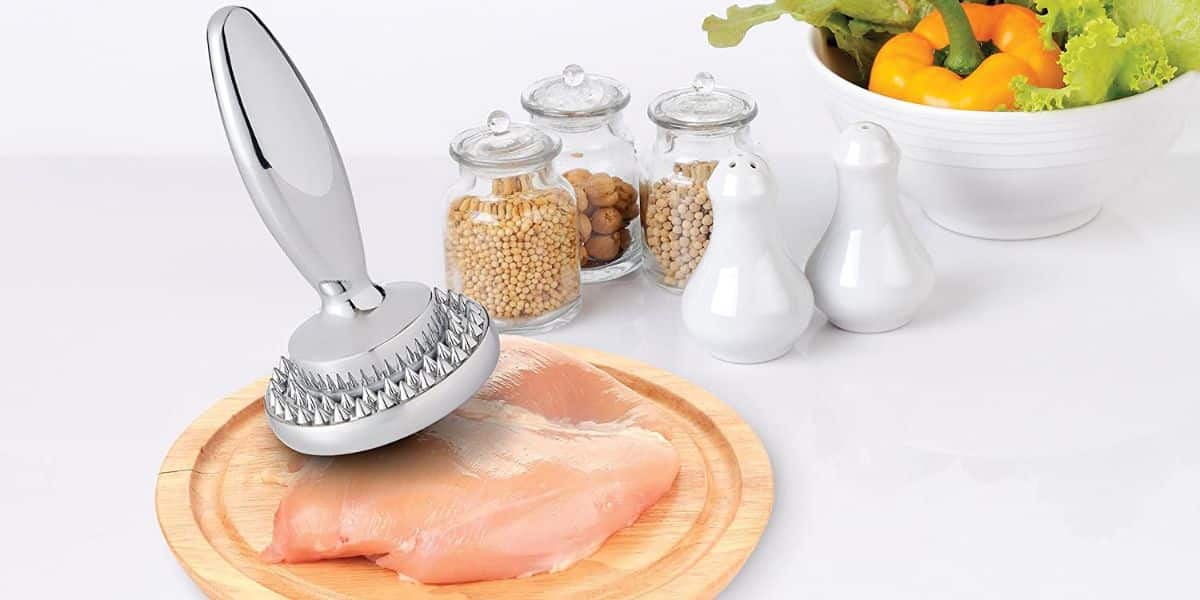Mastering the Art of Meat Tenderizing: Essential Barbecue Insights
Written By James Morgan
Everyone knows that achieving the perfect barbecue involves more than just tossing meat on the grill. For barbecue enthusiasts, mastering every step of the process is essential. One critical tool often overlooked is the meat tenderizer. The keyword here is 'how to use a meat tenderizer,' and understanding its application can be a game-changer for your grilling experience.

Why Use a Meat Tenderizer?
Before diving into the 'how,' let's address the 'why.' Tenderizing meat breaks down the muscle fibers, making it softer and more palatable. This process ensures that your guests will savor a juicy, flavorful, and tender piece of meat every time. Another advantage of tenderizing is that it allows marinades to penetrate deeper, infusing your meat with bold, exciting flavors.

Different Types of Meat Tenderizers
There are various types of meat tenderizers available, each serving a distinct purpose. Selecting the right one can make a significant difference in your grilling results.
Mechanical Tenderizers
Mechanical tenderizers physically break down muscle fibers using blades, needles, or mallets. They are a go-to tool for most grill masters looking for quick results. Options include:
- Mallet Tenderizers: These are hammer-shaped tools with textured faces to pound the meat.
- Blade Tenderizers: These devices use sharp blades to make tiny cuts in the meat.
- Needle Tenderizers: Similar to blade tenderizers but use needles instead.
Chemical Tenderizers
Chemical tenderizers use enzymes or acids to break down proteins. These are often in the form of powders or marinades. Examples include:
- Papain: Derived from papayas, this enzyme is commonly used in meat tenderizing powders.
- Bromelain: Extracted from pineapples, it serves a similar function to papain.
Check out more on this topic here.

Step-by-Step Guide to Using a Meat Tenderizer
1. Selecting the Right Meat
The first step in using a meat tenderizer is selecting the meat. Different cuts require different tenderizing methods. For tough cuts like brisket or flank steak, a mallet or blade tenderizer works best. For more delicate meats like chicken breasts, a chemical tenderizer might be ideal.
2. Preparing the Meat
Before tenderizing, ensure the meat is at room temperature. Pat it dry with paper towels to remove excess moisture, which helps the tenderizer to be more effective.
3. Applying the Tenderizer
Mechanical Method: Lay the meat on a sturdy surface, then use your tenderizer of choice. If using a mallet, pound evenly across the meat's surface. For blade or needle tenderizers, press the device firmly yet gently into the meat.
Chemical Method: For powdered tenderizers, sprinkle the recommended quantity evenly over the meat. For marinades, ensure the entire piece is well-coated and allow it to sit for the recommended time.
4. Cooking the Meat
Once tenderized, cook the meat as desired. Pay attention to cooking temperatures, using a meat thermometer for accuracy. For tips on reading a meat thermometer, click here.

Common Mistakes to Avoid
Over-tenderizing
Going overboard with the tenderizer can turn your meat into mush. Always follow the recommended times and techniques to prevent this.
Improper Cleaning
Ensure your tenderizing tools are thoroughly cleaned after each use. Cross-contamination can spoil your meat and make you sick.
Using the Wrong Method
Knowing when to use mechanical vs. chemical tenderizers is crucial. Using the wrong tool for the job can either under-tenderize or ruin the meat.
FAQs
What is the best meat tenderizer?
The best meat tenderizer depends on the type of meat and the desired outcome. Typically, a mallet is great for beef, while powdered tenderizers work well for chicken.
Can I tenderize meat too much?
Yes, over-tenderizing can ruin the texture, making it mushy. Follow the recommended guidelines for best results.
Do I need to tenderize all types of meat?
No, tenderizing is generally for tougher cuts of meat. Tender cuts like filet mignon don't require tenderizing.
For an extensive guide on why tenderizing is essential, visit this resource.
As an Amazon Associate, I earn from qualifying purchases.
As an Amazon Associate, I earn from qualifying purchases.



